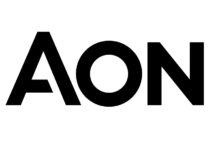Dysphagia is a condition that people can develop for a wide range of reasons. The main symptom of dysphagia is difficulties with swallowing foods and liquids. Being unable to swallow a lot of food can quickly become a problem and cause health hazards over time, preventing you from getting the nutrients that you need within your diet. If you are struggling with dysphagia symptoms, then it’s recommended that you get medical help and advice as soon as possible. This will help you with finding ways to manage your condition so that it doesn’t have a lasting impact on your health and wellbeing.
Main Dysphagia Symptoms
Trouble with swallowing liquid or food is the main symptom of this condition. Many people with dysphagia will also experience some other symptoms, such as regular heartburn, feeling pain when swallowing, or over-salivation in the mouth. Some people might regurgitate food frequently and unexpectedly. All of these symptoms can make dysphagia a challenging, unpleasant condition to deal with. The good news is that there are several strategies you can use to manage the symptoms and make it easier to live with the condition.
Specialist Thickening Products
If swallowing liquid is a main problem for you, then you may want to consider specialist thickening products that are designed to make liquids easier to swallow. This can be added to any liquid including hot and cold drinks, soups, or smoothies to make them easier to consume. You can find out more at https://www.linkedin.com/company/simplythick/.
Mechanical Soft Diet
Many people with dysphagia find that changes to their diet are crucial in order to ensure that they can eat safely and get all the nutrients that they need. The mechanical soft diet is often recommended by professionals as a type of diet that will usually work well for most people who have problems with chewing and swallowing. This includes only eating foods that are soft and easy to consume such as mashed potatoes, blended vegetables, pureed fruits, soups, and scrambled eggs.
Swallowing Therapies
There are various exercises and therapies that can be used by people with dysphagia to strengthen their ability to swallow. A speech and language therapist is usually the best professional to help with this, and you can normally get a referral from your primary care physician. They work with the patient to help develop a range of exercises and techniques that can be used on a regular basis to manage swallowing ability and improve symptoms.
Tube Feeding
In more severe cases where dysphagia has made it almost impossible to swallow or where a person is not getting the right nutrients from their diet to a point where it is having a worrisome effect on their health, tube feeding might be necessary. Food can be directed through the nose rather than the mouth using a tube, which sends food down the back of the throat and into the stomach directly.
Dysphagia is a condition that often appears as a symptom of a more serious underlying condition. The symptoms can be challenging to live with and can lead to malnutrition, which is why learning to manage them as early as possible is crucial.



















